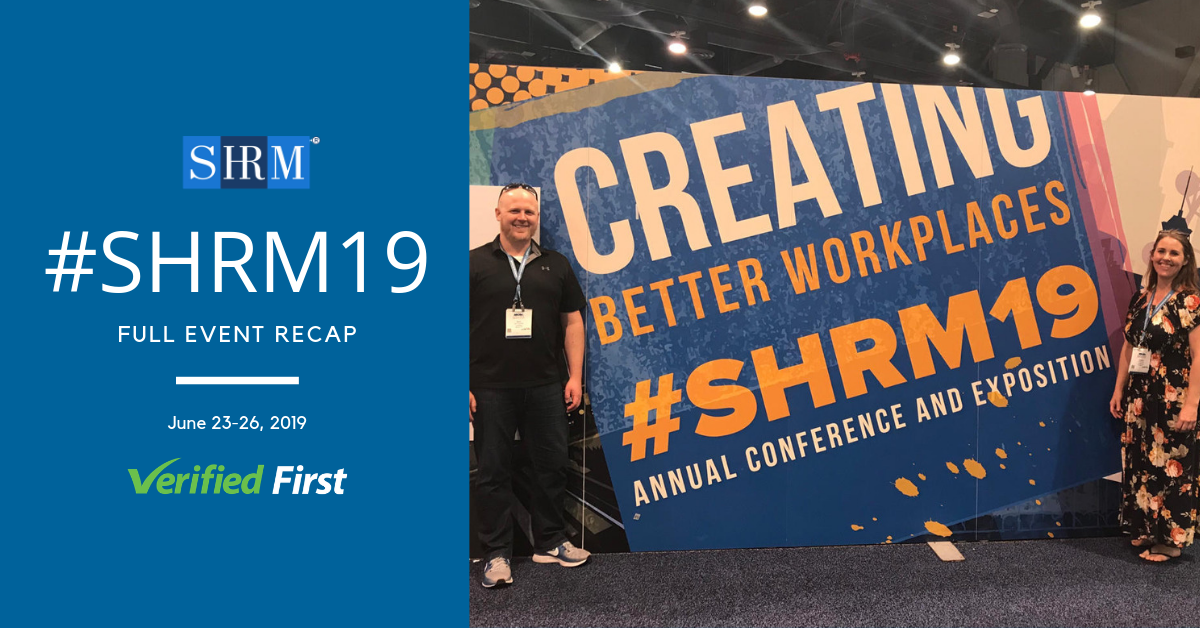
The SHRM Annual Conference took Las Vegas by storm from June 23–26. As one of the biggest HR conferences in the world with more than 20,000 attendees, it brought some incredible star power and provided game-changing insights. There were more than 300 sessions, but here are the ones that stood out.
Opening General Session featuring Johnny C. Taylor, Jr., SHRM-SCP and Martha Stewart
What other conference would start out with none other than Martha Stewart? She and SHRM’s president and CEO, Johnny C. Taylor, Jr., SHRM-SCP, talked about Martha’s incredible empire, including a magazine that was ahead of its time, how she recovered after legal missteps, to how she became one of Forbes’ “100 Greatest Minds,” and business partners with Snoop Dogg.
“Learn, be curious and ask the right questions… Every day, I drive my driver crazy in the city because I won't let him go down the same street twice. We have to go down a new street because we might see something interesting.”
She talked openly about when she was in a federal correctional facility after obstructing justice, among other charges. During her time there, she taught women entrepreneur skills. Now, she supports reform that encourages companies to hire people with criminal records.
“Making the best of such a horrible event is hard. It's very hard,” she said. “You must have the ability to look forward and not look back.”
Read more about Martha’s talk here.
General Session featuring Brené Brown: Dare to Lead
Brené Brown, an author and researcher at the University of Houston, gave an inspiring talk on leadership, and the fact that it takes a lot of courage to be a strong leader. She explained that there are four things that limit leadership:
Read more about Brené’s talk here.
Beyond the Illusion of Inclusion: Leveraging the Talents of Employees with Disabilities
Judy Young, Associate Director or the Scheinman Institute of the ILR School at Cornell University, and Susan W. Brecher, the Director of Human Capital Development and Legal Programs at Cornell University talked about the best practices and benefits of employing people with disabilities. They offered three main steps:
The Critical Skills an HR Leader Needs in the Artificial Intelligence Era
As more and more workplaces are looking at using AI as part of their human resources strategy, executives will expect HR leaders to know the ins and outs of AI. This is a difficult task, considering the fact that AI technology changes by the day. Ben Eubanks offered some clarity on this by explaining what AI does and doesn’t do, and how it can and can’t help your HR team. He explained that the clearest way to define how to use AI is by looking at the jobs AI and/or your team complete. For any jobs that are repetitive, and focused on one specific task, AI is a good option. This includes things like sourcing resumes, answering preliminary questions, and setting up interviews. But HR humans will always be better at jobs that require soft skills like intuition and creativity such as interviewing, reading cover letters, and recruiting diverse candidates.
The Power of Giving: Conscious Capitalism and the Future of Business
Blake Mycoskie, the founder of TOMS, gave a thought-provoking and emotional closing session. He talked about how his company was founded with philanthropy in mind, without relying on donations or charity. He also talked about how starting a company that skyrocketed to global success had personal repercussions; five years ago, Blake was diagnosed with depression, which he said he hadn’t talked about publically. Now, he’s focusing on teaching people how to be happy and successful at the same time, and he challenged SHRM attendees to commit to small changes, like turning off their phones more frequently, that can offer big health improvements.
Read more about Blake’s session here.
Now that the SHRM annual conference is over, we know that summer’s begun. It's the perfect time of year to apply background sunscreen and protect those employees of yours. Learn more about Verified First's background screening solutions here.